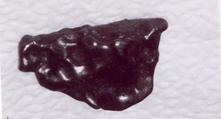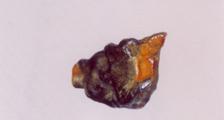Mars is Not the Red Planet
Hi! I'm Dr. Jack Edelman, and I teach biology and earth sciences both at the high school and college levels. I hold a Ph.D. in biological sciences, with a specialization in cytogenetics, which is the biology of chromosomes. I have published over 40 scientific research papers to date in journals all over the world in the field of chromosome biology. I am also author of the book "The
Natural Classroom: A Directory of Field Courses, Programs, and Expeditions in the Natural sciences"
(North American Press/Fulcrum Publishing, Golden, Colorado, 1996),www.fulcrumbooks.com/contributorinfo.cfm?ContribID=4542. I have proposed some outrageous scientific hypotheses over the years, for example, the hypothesis that evolution and speciation were caused by mutations caused by supernova (exploding stars) explosions, which showered the Earth with X-rays, gamma rays, etc., and I used bird (chicken) chromosomes to
support my hypothesis! The paper was published in "The Nucleus"--a journal published in Calcutta, India: "Bird Chromosomes as the 'Smoking-Gun' for the Supernova theory of Mass Extinctions: A Case for Punctuated Equilibrium" (Nucleus, 47(3):129-134, 2004).
On this website I will now publish my next 'outrageous' hypothesis:
MARS is NOT the RED PLANET! (Well, it may be red, but.........
{TO ALL THE 'PLUTONIANS' OUT THERE WHO WERE SADDENED BY THE RECENT DEMOTION OF PLUTO: I have some more bad news......(I hate to be the bearer or bad news, and I certainly don't want to rain on anybody's parade, BUT} MARS IS NOT A 'PLANET' EITHER!
What??? How can that possibly be, you ask???? Well, let me explain why I've come to this conclusion:
First, if Mars isn't a planet, then what actually IS it? It is the REMAINS of an ancient, much larger planet! When we see Mars we are looking at the iron or iron/nickel CORE (inner and/or outer core) of a planet that was hit by something--a collision so awesome that the crust and mantle of the planet was knocked right out into space! The crust and mantle formed the asteriod belt, which exists between Mars and Jupiter. The Mars we see today is merely the rusty core---iron oxides--of the original planet! The Mars of today is 'The RUSTY WARRIOR'! What are the supporting evidences for this outrageous hypothesis, you ask? Well, let's consider these facts:
- Mars is the red planet--this is due to its 'soil' which is rich in iron oxides--BUT, why of ALL the planets in our solar system is Mars the only planet which is red???? Scientists have always described Mars being red due to the iron oxides in the soil, but they never attempted to explain WHY this is so--and they never even seemed to ask this question. The reason is that when the crust and mantle were knocked off, the iron of the core somehow became oxidized--probably due to oxygen in its atmosphere, some of which remained after the collision and chemically reacted with the iron core. Here are two photos--one of a small meteorite which is mostly iron or iron & nickel--note its black/silvery metallic luster.The second photo shows this same meteorite after I filed the surface and placed it in water for a few days--it became rusty! This is what happened to Mars--the core was exposed to water and/or oxygen and it rusted--this is why Mars' soil is red!
Meteorite after oxidation Meteorite before oxidation
- The asteroid belt lies between Mars and Jupiter. Why doesn't such a belt lie between other planets? Because the belt is the remains of the Martian surface (crust and mantle) which was knocked off in the collision!
- If the asteroid belt was formed mainly from the crust and mantle, the asteroids should be more 'rocky' than metallic. This is indeed the case! According to the Sol company, http://www.solstation.com/stars/asteroid.htm nearly 93% of asteroids are composed of silicates (rocky matter). This could be explained if they were formed when an impact knocked the crust and mantle off what we currently call "Mars"!
- The 'smoking-Gun' for my theory can be seen just by looking at an image of Mars--the point of impact is still there! We call it Valles Marineris--a chasm that is 4000Km long (2500 miles), several hundred meters wide, and up to 6 Km (nearly 4 miles) deep! Scientists knew for a long time about this 'Grand Canyon' on Mars--but they never attempted to really explain how it got there! It seems they just accepted the fact that it was there!
- The atmosphere of Mars is mainly carbon dioxide. Again, I never read a satisfactory explanation for this, but no other planet we know of has such a high carbon dioxide content. I can't explain it either, but my guess is that the atmopshere probably had a high methane and oxygen content, and when the impact occurred, there was probably horrendous combustion of the methane, producing a high carbon dioxide atmosphere.
- Mars has essentially no magnetic field. In order for a planet to have a magnetic field, it must have a core or outer core of liquid iron. This is why the Earth has a strong magnetic field. This has lead sceintists to propose that Mars has no metal core, or at least no liquid metal core. According to my hypothesis, of course Mars has no metal core, because what we know as the planet Mars is actually the core of the original planet! The crust and mantle were blown off in the collision, so the iron/nickel core was exposed--it then cooled, solidified and rusted, at least at the surface!
- Mars has two moons, which are irregularly shaped, and are thought to be asteroids which it 'captured'. Maybe this is correct, but, according to my theory, these moons might have been part of the crust/mantle blown off in the collision, but which weren't ejected far out enough to enter the asteroid belt--so these moons may not be 'captured' asteroids, but rather masses of Mars' surface blown off in the collision which did not have enough energy to enter the belt, so they remained in mars' orbit. To extend this idea a bit, the most widely accepted theory of the origin of the Earth's moon is that, early in its formation, an object the size of Mars collided with the Earth, knocking off some of the Earth's mantle which became our moon. If, somehow, it was the original planet Mars itself which somehow collided with early Earth, then maybe that can explain the origin of the asteroid belt; Mars' two moons, and maybe our moon itself was actually part of the crust/mantle of Mars! The only way to really be able to test this idea would be to someday take a sample of an asteroid from the belt and chemically/isotopically analyze it.
- Mars has many 'dust storms'. The pattern of deposition of this dust is what was originally thought to be 'canals' built by the 'Martians'! What actually does this dust consist of? Scientists never quite explained this, but, according to my hypothesis, this dust may be nothing more than 'rust' particles---the iron oxide formed from oxidation of the exposed metallic core and which is easily blown around by winds.
- The surface of Mars is basically flat and dull--nothing but soil and rocks. Yes, there are a few extinct volcanoes, including Mons Olympus, (the largest volcano in our solar system), and a few dried-up stream beds and the gigantic chasm (Valles Marineris), but other than these, the surface is flat and dull. Where are the vast mountain ranges, etc? This topography of flatness would be expected if Mars is merely the exposed iron core of a former planet. In fact, the water that formed the dried-up streambeds might have been produced from the rocks of the crust and mantle during the alleged impact, or if the impactor had been an icy comet.
- The surface of Mars is loaded with rocks and boulders. In addition, these rocks and boulders are all angular and sharp-edged. This can be seen on the following websites: www.daviddarling.info/images/Mars_panorama.jpg and www.calacademy.org/science_now/images/Mars1.jpg and www.mariotomic.com/archives/attach/mars_surface.jpg. The surface of Venus, on the other hand, has a smoother surface: http://users.med.auth.gr/~tsikaras/astra/venus1.jpg If there was once much running water on Mars' surface, the rocks should not be so angular!The rocks should be smooth and rounded! The surface of Mars resembles a region that has been blasted by dynamite! This suggests that the surface was formed from some kind of catastrophic blast or impact! My idea is that the crust and mantle were literally blown away, leaving behind the metal core which eventually rusted by oxidation, giving it the reddish color. Mars---the "RUSTY WARRIOR"!
Anyway, that's my latest CrrrrrRRRazy hypothesis! Let me know what you think!
(themadprofessor47@hotmail.com). In closing, and just for the heck of it, I'm posting photos of my basset hounds:
"Axelrod" (1970-1984) "Alvina" (born March 23, 2007)







